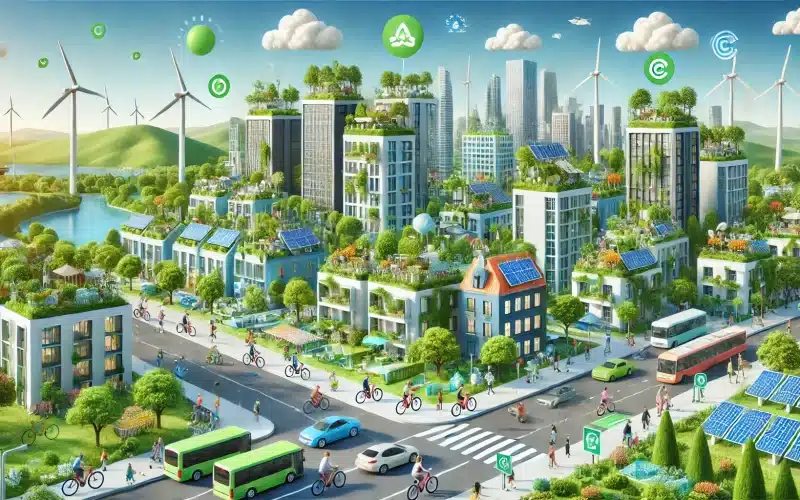
The ‘fit for 55‘ package, launched in July and December 2021, aims to achieve the European Climate Law goals: climate neutrality by 2050 and a 55% reduction in net greenhouse gas (GHG) emissions by 2030, compared to 1990 levels. This package includes 13 interlinked proposals to revise existing EU climate and energy laws, along with six new legislative proposals.
All 19 proposals, except the Energy Taxation Directive, have been adopted by the European Parliament and the Council of the EU. Now the ‘Fit for 55’ package has been mapped in one infographic.
The package aims to accelerate emissions reductions in sectors covered by the EU Emissions Trading System (ETS) and the Effort-sharing Regulation, while increasing carbon removals in the land use, land-use change, and forestry (LULUCF) sector.
Fit for 55 Package – Related Legislative Initiatives
These are the links between the law proposals.
- Revised EED and Social Climate Fund Regulation: Cross-refer to the use of the fund.
- The package aims to accelerate emissions reductions in sectors covered by the EU Emissions Trading System (ETS) and the Effort-sharing Regulation, while increasing carbon removals in the land use, land-use change, and forestry (LULUCF) sector.
- Revised Energy Taxation Directive: Links with the Renewable Energy Directive and the Alternative Fuels Infrastructure Directive.
- Recast Gas and Hydrogen Regulation and Directive: Refer to the Renewable Energy Directive for definitions of renewable and low-carbon gas.
- Revised Renewable Energy Directive: Refers to ‘efficient district heating and cooling’ and ‘energy performance contracting’ as defined in the Energy Efficiency Directive (EED).
Transport: A Challenging Sector for Climate Action
GHG emissions from the transport sector have stagnated over the past decade, unlike other sectors like electricity generation and industry, which have seen substantial reductions thanks to the EU ETS. To ensure the transport sector contributes to the EU’s climate goals, maritime and road transport sectors are included in the EU ETS, while still covered by the Effort-sharing Regulation.
The review of the Energy Taxation Directive, pending adoption by the Council, will raise the price of GHG emissions in the transport sector. The revised Renewable Energy Directive sets requirements for renewable transport fuels and introduces a credit mechanism to promote electromobility.
Specific legislative acts target emissions reductions and the supply of alternative fuels in road transport, maritime transport, and aviation sub-sectors.
In short:
- Aviation: free ETS allowances for airlines are being phased out, and flights going outside the European Economic Area become subject to the international CORSIA offsetting scheme. The ReFuelEU Aviation Regulation promotes sustainable aviation fuels.
- Road transport: CO2 emission standards for new cars have become stricter, aiming for 100 % zero-emission vehicles by 2035. The Social Climate Fund, financed by the new ETS for road transport and buildings, will improve access to zero- and low-emission mobility and transport.
- Maritime transport: the sector was included in the EU ETS. The FuelEU Maritime Regulation promotes sustainable maritime fuels.
Energy: At the Heart of the Climate Neutrality Transition
Several laws in the ‘fit for 55’ package address energy-related GHG emissions. Key targets include achieving a 42.5-45% share of renewable energy sources at the EU level by 2030 and efficiently reducing primary and final energy consumption. A higher carbon price, driven by the revision of the EU ETS and the Energy Taxation Directive, will facilitate the rollout of renewables and energy efficiency improvements.
EU ETS: Cornerstone of EU Climate Action
The ‘fit for 55’ package includes four laws intended to increase the ambition of the EU ETS, improve its functioning, expand its scope to include maritime transport, road transport, and buildings, and ensure airline participation in the international CORSIA offsetting scheme. These laws are complemented by a regulation introducing a carbon border adjustment mechanism to safeguard international competitiveness by pricing carbon emissions of imports, and a regulation on a Social Climate Fund to address the social impacts of extending the EU ETS to road transport and buildings.
